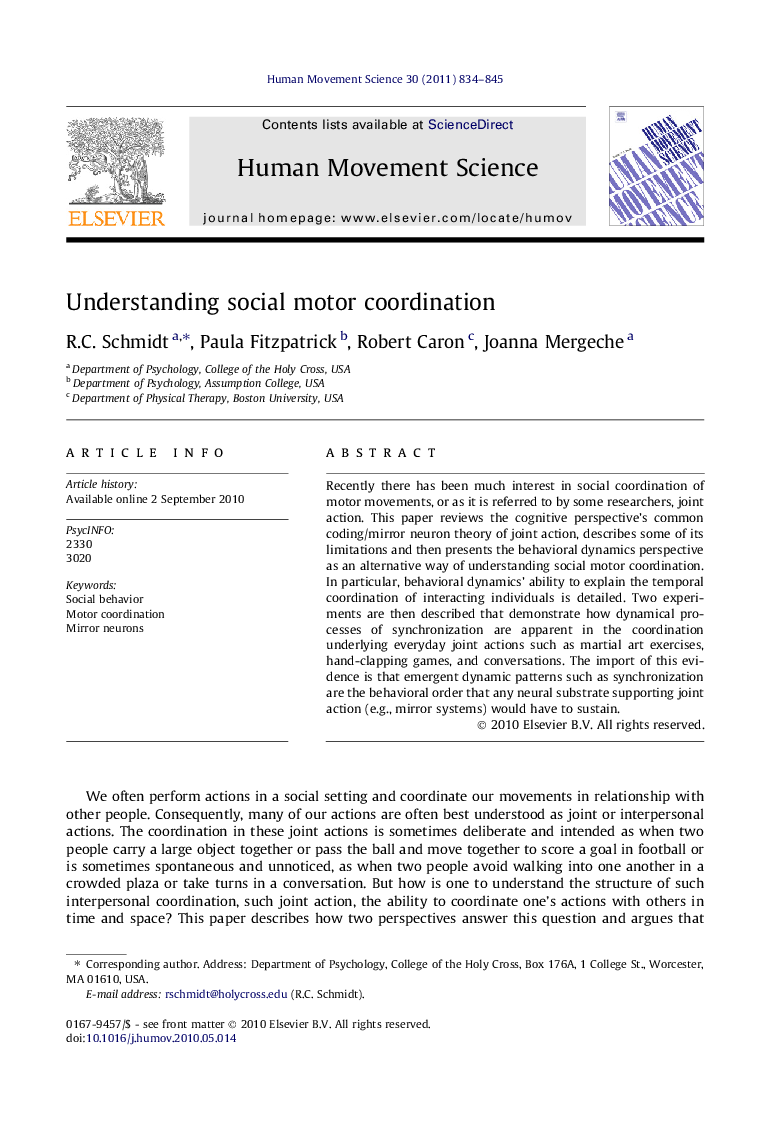| Article ID | Journal | Published Year | Pages | File Type |
|---|---|---|---|---|
| 928604 | Human Movement Science | 2011 | 12 Pages |
Recently there has been much interest in social coordination of motor movements, or as it is referred to by some researchers, joint action. This paper reviews the cognitive perspective’s common coding/mirror neuron theory of joint action, describes some of its limitations and then presents the behavioral dynamics perspective as an alternative way of understanding social motor coordination. In particular, behavioral dynamics’ ability to explain the temporal coordination of interacting individuals is detailed. Two experiments are then described that demonstrate how dynamical processes of synchronization are apparent in the coordination underlying everyday joint actions such as martial art exercises, hand-clapping games, and conversations. The import of this evidence is that emergent dynamic patterns such as synchronization are the behavioral order that any neural substrate supporting joint action (e.g., mirror systems) would have to sustain.
